The prototype. In 2012 Norfolk Southern celebrated its 30th anniversary by painting 20 of its newest locomotives in paint schemes inspired by its predecessor railroads. Electro-Motive Diesel SD70ACe locomotives made up half the fleet, while General Electric ES44AC locomotives made up the other half. All remain in revenue service.
Both the SD70ACe and the ES44AC were developed in the early 2000s to meet the United States Environmental Protection Agency’s strict Tier 2 emissions standards. The 4,300 hp SD70ACe and the 4,400 hp ES44AC are not only more environmentally friendly, they’re also more efficient. Since 2005, more than 1,300 SD70ACes and its variants and more than 5,000 ES44ACs and its variants have been produced.
Some of the detail on the Bachmann models is molded in the body shell, including the hand grabs on each end. The rooftop fan grills are also molded in. These parts, especially the grills, would look better if they were separately applied. The scale-profile handrails, m.u. hoses, and uncoupling levers are separate flexible plastic parts to resist breaking. Other separate detail parts include the horn and cab windshield wipers.
The paint on both models is smoothly applied with sharp color separation. The pinstripes are especially impressive. They are even and straight without any voids. Both paint schemes match prototype photos, except that the circle keystone PRR herald on the sides of no. 8102 is slightly off center.
A can motor with dual brass flywheels rests in the middle of a die-cast metal frame. Two drive shafts transfer power to the truck-mounted gearboxes.
The Sound Value decoder is mounted on top of the motor. The plastic fuel tank contains a well-enclosed oval speaker.
Sound features. The Sound Value decoder features the same excellent sound quality as a fully featured Tsunami decoder. Both locomotives had the correct diesel engine sounds. I could also adjust individual volume levels for the bell, air horn, and engine exhaust.
Some Tsunami sound features aren’t included, such as the equalizer and reverb controls. User-controlled functions include the bell, long and short horn blasts, dynamic brakes, and headlight dimmer, but no brake sounds. One of my favorite features on the Tsunami, the train brake, also isn’t supported.
There are still plenty of programming options available, including my other favorite feature: manual notching. I was able to easily set the decoder for manual notching and remap function keys so that I could use functions 6 and 9 to increase or decrease the rpm independent of the locomotive speed.
I easily programmed each locomotive to its locomotive number and advance consisted the pair. I could also program the functions controlled by the consist address using CVs 21 and 22. A full list of the supported SoundValue CVs is available at www.soundtraxx.com. Click on “Factory-installed decoders” under Quick Links at the bottom of the SoundTraxx home page.
On a DC layout, most of the sounds are automatic and limited to the diesel engine exhaust where the rpm increased as I advanced the throttle. A bell sounds when the models move under 20 scale mph. For those with access to a DCC system or DC sound programmer, such as the MRC Tech 6, other automatic sound effects can be added. For example, a grade-crossing horn signal can be programmed to trigger whenever the DC throttle is quickly advanced.
Light-emitting diodes provide a realistic yellowish glow for the headlights. Depending on the direction of travel, the forward headlight is on bright, and the rearward light is dim. In DCC, both headlights can also be dimmed for Rule 17 lighting by pressing function 7. Ditch lights are modeled on each locomotive, but they are non-operational.
On our DC test track, the locomotives’ sound and lights turned on at 6 volts and the engines started down the track at 7 volts. At 12 volts the models ran at 53 scale mph, which is lower than each prototype’s 75 mph top speed, but fast enough for most model railroads.
According to our force meter test, a single ES44AC or SD70ACe has enough power to haul 49 free-rolling HO scale freight cars on straight and level track. During our hill climb test, a single unit pulled 14 cars up a 3 percent grade without slipping or stalling. Even during slow-speed switching maneuvers, the
locomotives ran smoothly without stalling or interrupted sound effects, thanks to their all-wheel electrical pickup.
Overall the Bachmann ES44AC and SD70ACe are solidly performing HO scale locomotives and credible models of their famous prototypes.
Manufacturer
Bachmann Industries
1400 E. Erie Ave.
Philadelphia, PA 19124
www.bachmanntrains.com
Era: 2012 to present (as decorated)
Road names
GE ES44AC: Pennsylvania RR, Central of Georgia, Lehigh Valley, Nickel Plate Road, Southern Ry.
EMD SD70ACe: New York Central, Erie, Jersey Central Lines, Virginian, Wabash
Features
- All-wheel drive and electrical pickup
- Blackened metal RP-25 contour wheels in gauge
- Can motor with dual brass flywheels
- Dual-mode SoundTraxx Sound Value Digital Command Control sound decoder
- Kadee-compatible E-Z Mate Mark II knuckle couplers, at correct height
- Light-emitting diode headlights
- Weight: 1 pound 2 ounces





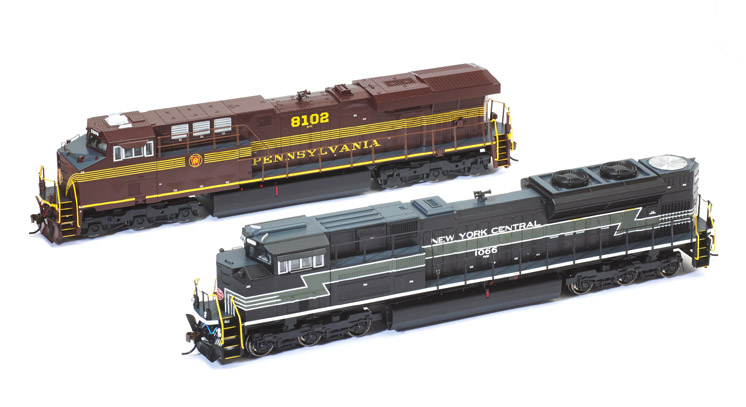
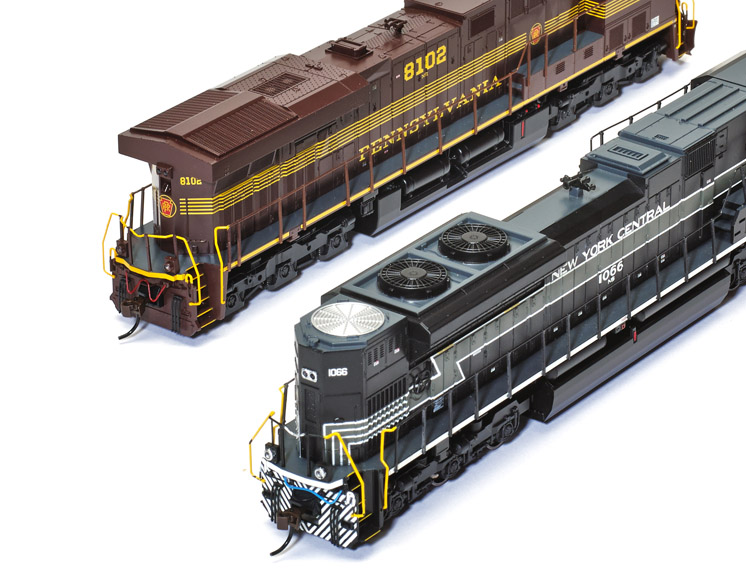

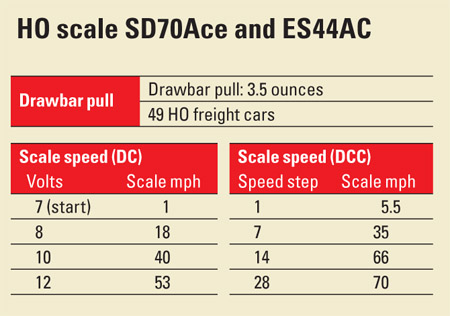

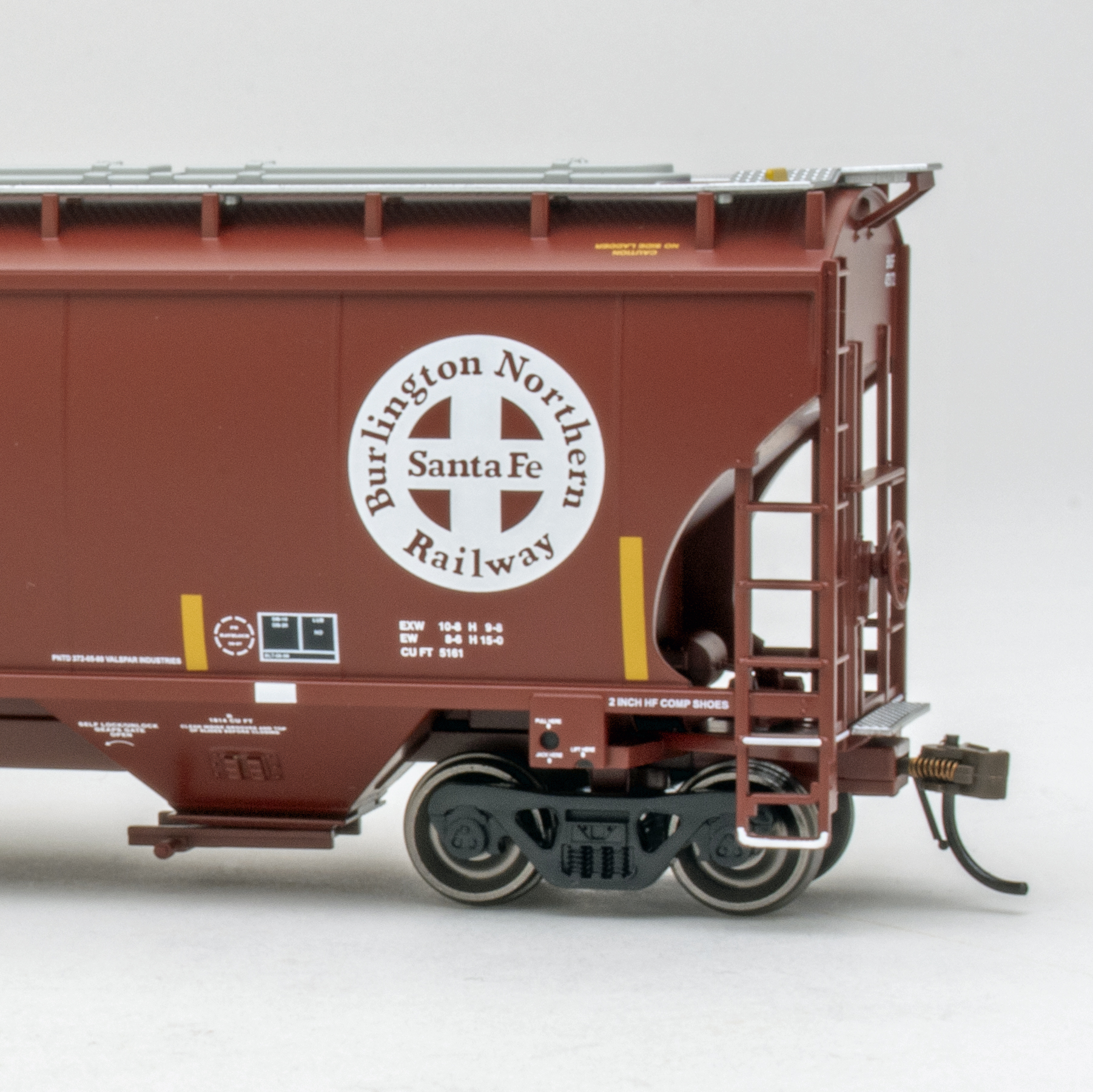
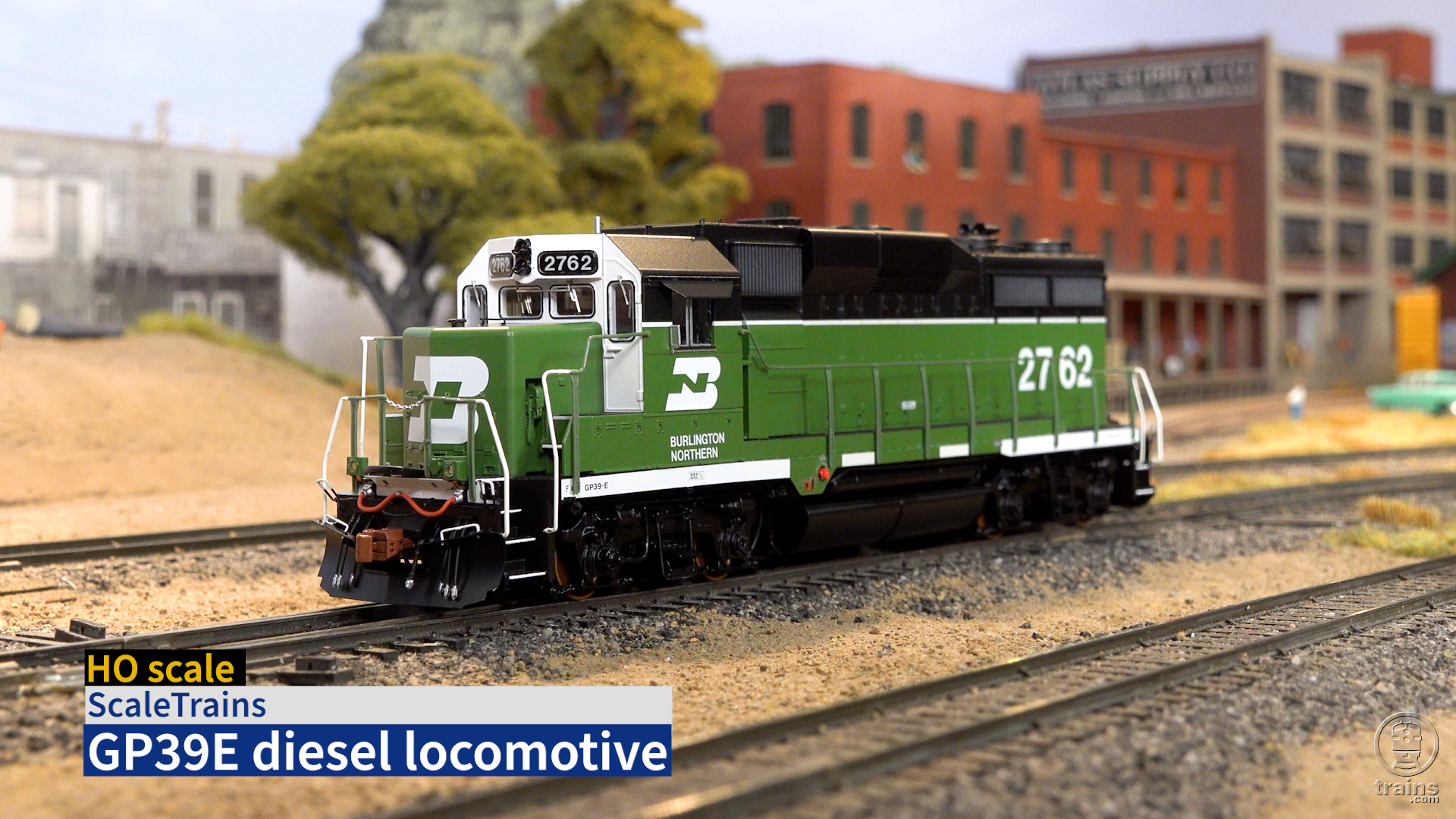
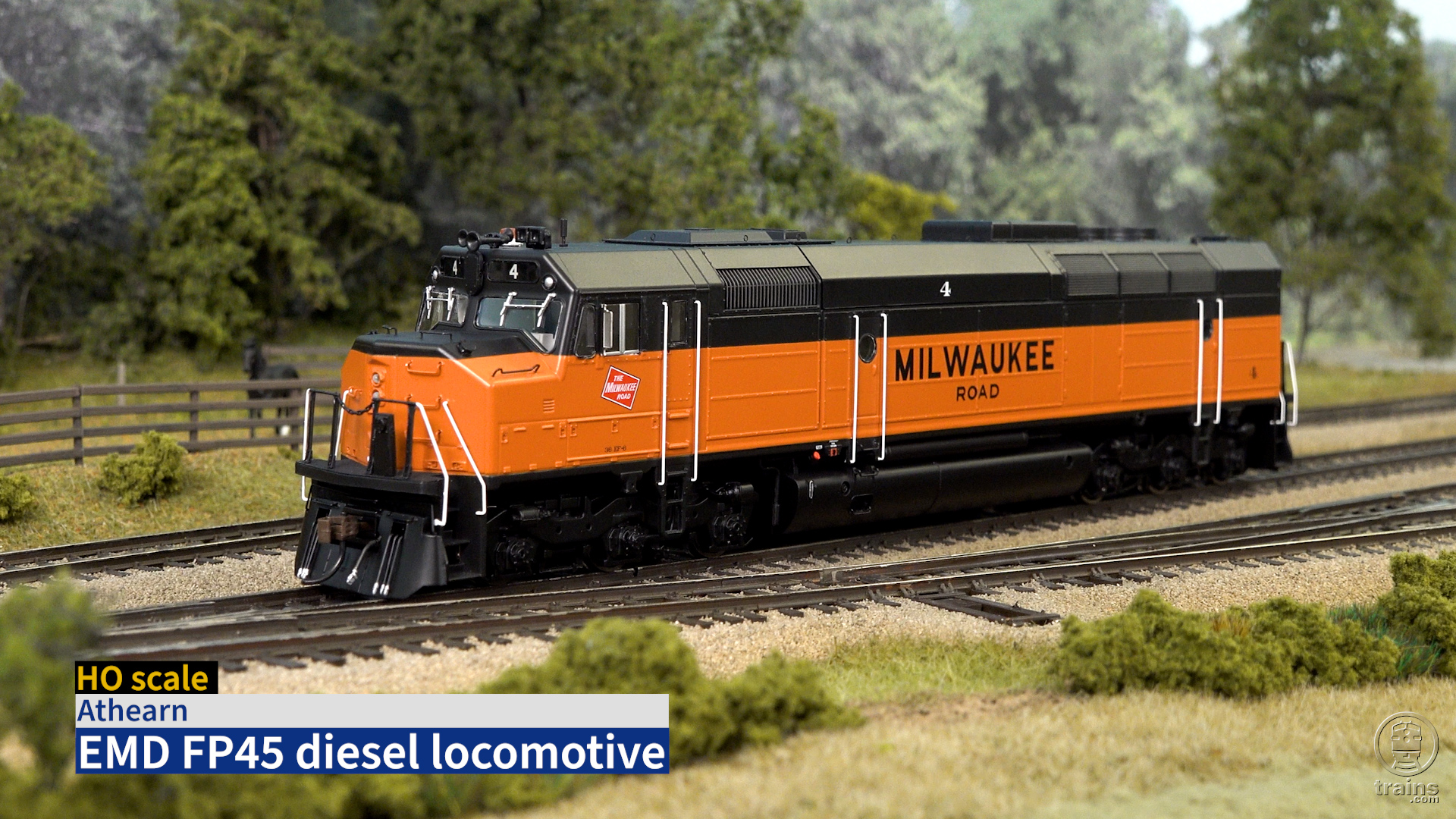
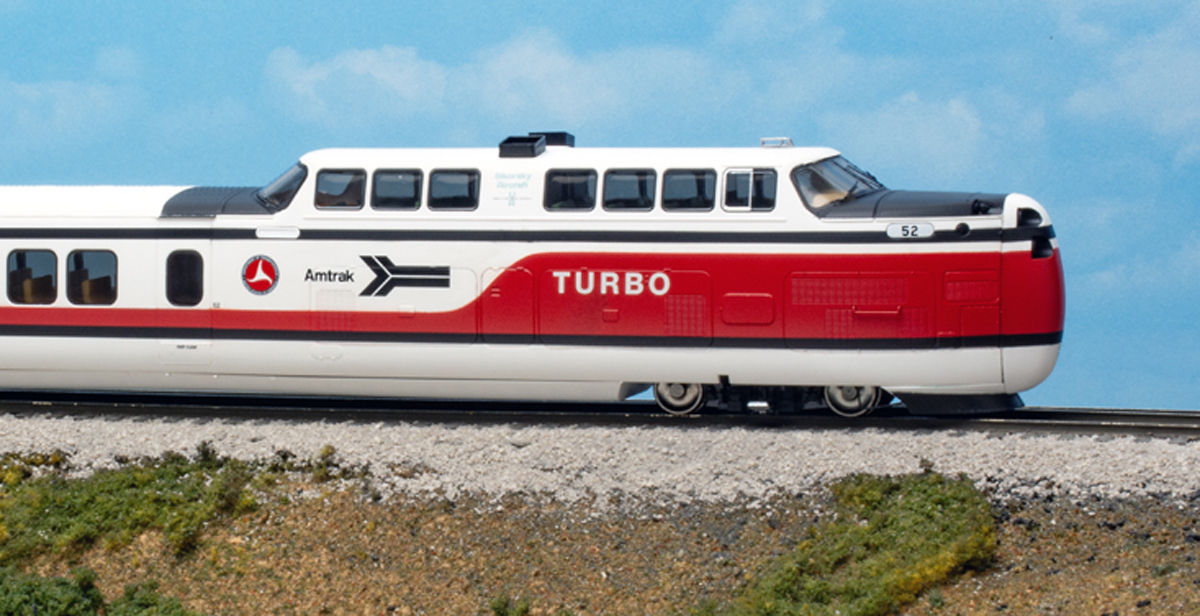




Very good article . Except for the fact of the Tsumani sound set features that is true that it does not support brake sounds or functional brake. They do not say that it does not support start up,shut down,air compressors,pop valves,air releases,radiator fans and or coupler sounds. Basically only supports about 25% of the Tsumani sound sets.The first run also only supports front and rear headlights ,wile the second run does support working ditch lights ,For this asking price it should be enough to support at least a full sound set since they already have the 5 ban EQ and the Reverb mixer eliminated from this sound decoder ! This sound decoder works well ,but is way to lean on sounds especially since it is only offered with sound that makes it not a very good value for the price compared to the features and sound sets on other company’s that make these same models even with more separately applied details and a great paint job also ! With these issues it is not so much of a value for the price stated. A good model,but not for 300 ,but half of that only
Hmmmm. $300 for a loco with molded grabs and a reduced feature/function decoder. Doesn't sound that competitive with other manufacturer offerings.